- We added information about the Family Bell feature on Google smart speakers and displays.
- Google just announced that it's revealing a new smart speaker and Chromecast in an event on September 30, 2020, we'll update our guide as soon as we have information about the new products.
- The Google Chromecast Ultra currently appears to be out of stock at major retailers, but there's a waitlist on the Google Store so we don't think it's gone for good. In the meantime, you can still buy it in the Google Stadia Premiere Edition.
Whether you’re unwrapping some brand new Google Nest† smart speakers or revisiting your strained relationship with Google Assistant, we’ve got your back. Learn how to enhance your smart home with this guide.
Getting to know Google Nest products
“Hey Google, what are you?”
What is Google Home?
Folks often use the terms “Google Home” and “Google Assistant” interchangeably. But they’re actually three distinct products from Google. We totally get it. Google Home is a lot easier to say (or type) than Google Assistant. For the sake of simplicity, here’s how we’ll describe each product from here on out:
- Google Home is a mobile app for controlling smart home devices that work with Google Assistant. It works a lot like the Apple Home app or the Amazon Alexa app.
- Google Assistant is voice control software like Amazon Alexa and Siri.
- Google Home smart speaker is one physical device the voice control software can play on. It’s also one device that the mobile app can control.
Think of Google Assistant as the brains and voice, while the mobile app and speaker are the body. Google Home app is mostly a convenient interface, and the Google Home smart speaker just helps Google Assistant talk to you.
Because Google Assistant is the real mastermind behind Google’s smart home devices, we’re going to focus our efforts on helping you learn what it can do.
Whether you need a digital helper or a fun way to keep the kids busy, we think Google Assistant is a worthy rival to Amazon’s Alexa as one of the best smart home hubs.
New Google products named after Nest
How does Google Assistant work?
If you have a compatible device (phone, speaker, etc.), you can get Google Assistant’s attention by saying one of two wake words: “OK Google” or “Hey Google.” Then you make a request or ask a question.
Google Assistant quickly deciphers your vocal instructions using the same technology that powers Google’s outstanding search engine. The reaction time is so fast that you’ll usually get an answer within a few seconds.
If you ask a question, the Assistant gives you a brief answer and sometimes sends the top search result to your phone so that you can learn more.
Google Assistant doesn’t just answer questions. It works with oodles of services so you can check the traffic for your commute and squeeze in a quick yoga workout before you head to work.
Google Assistant works on tons of devices
Compare Google speakers
Google Nest smart speakers use microphones so you can talk directly to Google Assistant anywhere in your home. Google smart speakers come in different sizes with varying sound quality. While all of the smart home devices in this table have built-in Google Assistant voice controls, you’ll pay a premium for better sound quality.
| Price* |
| Speakers |
| Microphones |
| Line in/out |
| Bluetooth audio |
| Google Home Mini (2-pack) | Google Nest Mini | Google Home | Google Nest Wi-Fi | Google Home Max |
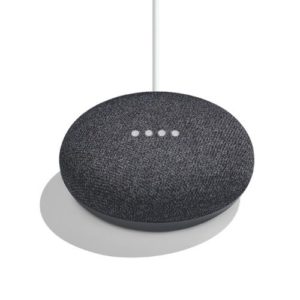 |
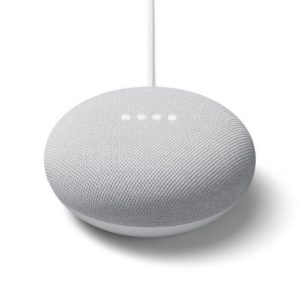 |
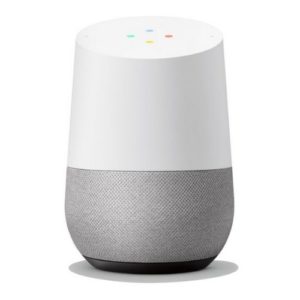 |
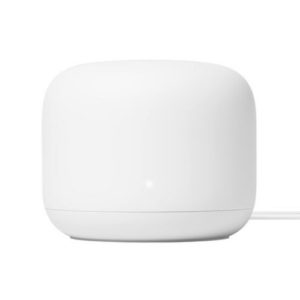 |
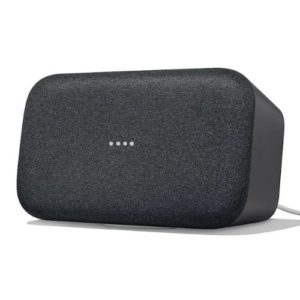 |
| $99.00 | $49.00 | $99.00 | $169.00 | $299.00 |
| 1.6 in. speaker | 1.6 in. speaker | 2 in. speaker 2 in. passive radiator (2) |
1.6 in. speaker | 0.7 in. tweeter (2) 4.5 in. woofer (2) |
| 2 | 3 | 2 | 3 | 6 |
| No X |
No X |
No X |
No X |
3.5 mm line in ✓ |
| Yes ✓ |
Yes ✓ |
Yes ✓ |
Yes ✓ |
Yes ✓ |
| View on Kohl's | View on Kohl's | View on Walmart | View on Kohl's | View on Kohl's |
Info current as of 09/17/2020. Offers and availability may vary by location and are subject to change.
Group your speakers together
Google Home Mini
The Google Home Mini is Google’s original answer to the Amazon Echo Dot. This small speaker has an attractive cloth exterior that looks at home on any table or shelf. You could argue that it inspired Amazon to adopt stylish fabric iterations for its own smart speakers.
It’s the cheapest Google Home device (it dropped $10 cheaper after the Nest Mini came out), but it comes with surprisingly good sound quality. You might consider using one in the kitchen for quick timers and measurement conversions.
Google Nest Mini
The Google Nest Mini is the second generation version of the Google Home Mini. While it costs the same as the original Mini once did (about $50), it comes with three big upgrades:
- Improved sound quality for better music
- An additional microphone for better voice recognition
- A notch on the back for wall mounting
Wall mounting doesn’t seem like a big deal until you realize you can place the Nest Mini almost anywhere without buying a third-party mount. It’s great if you want to save shelf space for more important things—like action figures.
Create speaker pairs for stereo sound
Google Home
The Google Home speaker’s design looks like a chic stick of lipstick bulked up at the gym.
The top half of the unit comes only in white, which might not fit your style. But you can switch out the original gray base for your choice of three other colors. There are even third-party battery packs so you can take your Google Home around the house as you check off your chore list.
While it doesn’t go all-in on sound quality like the Google Home Max, it’s more competent than both Mini options for everyday listening to your favorite tunes and audiobooks.
Google Nest Wi-Fi
The Google Nest Wi-Fi* is a wireless router first and a smart speaker second. This clever router bathes your home in a strong Wi-Fi signal by using multiple Nest Wi-Fi devices (depending on the size of your house). Because the devices work together, you’re always close to the strongest Wi-Fi connection.
Despite costing more than the Google Home, it has the same speaker as the Google Nest Mini. This is useful for issuing voice commands and listening to podcasts, but it’s hardly revolutionary for music. Still, we like that it pulls double duty as a router and smart speaker.
*Home size, materials and layout can affect how Wi-Fi signal travels. Larger homes or homes with thicker walls or long, narrow layouts may need extra Wi-Fi points for full coverage. Strength and speed of signal will depend on your internet provider.
Eventually, Google Nest Wi-Fi will be a smart hub
Google Home Max
The Google Home Max is a music machine. It houses two subwoofers to put some power behind your favorite jams. Because bass isn’t everything, Google also gave the Max two custom tweeters to flesh out the rest of the audio spectrum for a rich overall sound.
A signature feature of the Google Home Max is the Smart Sound automatic equalizer. This allows the Max to adjust settings on the fly for optimal performance in any room.
The Google Home Max is the only Google speaker with a 3.5 mm audio input, a feature that’s common on other brands. You can play music from older devices and TVs using a simple cable. Google doesn’t let you group audio and video devices, so this is the closest you can get with Google’s products. But there are loads of third-party Google Assistant devices that can do the job.
Other Google devices with built-in voice controls
Compare Google displays
Google smart displays expand the formula behind smart speakers to give you a more engaging experience. With a simple vocal command, you can watch cat videos on YouTube, control your army of smart home devices, or get help with recipes in the kitchen.
| Price* |
| Screen size |
| Max resolution |
| Camera |
| Google Nest Hub | Google Nest Hub Max | Google Chromecast Ultra |
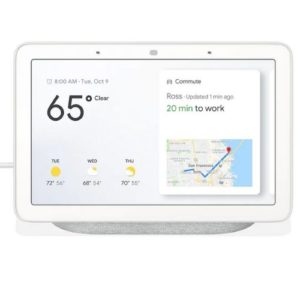 |
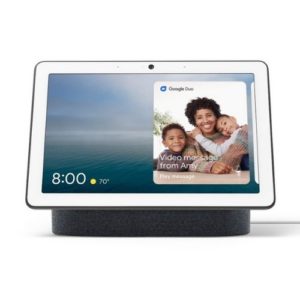 |
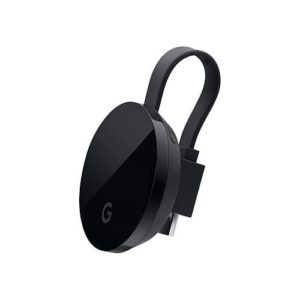 |
| $89.00 | $229.00 | $69.00 |
| 7 in. | 10 in. | HDMI out to TV |
| 600p | 800p | 4K |
| No X |
6.5MP ✓ |
No X |
| View on Kohl's | View on Kohl's | View on Staples |
Info current as of 09/17/2020. Offers and availability may vary by location and are subject to change.
Google Nest Hub
Google’s smart displays come in two flavors: the Google Nest Hub and the Google Nest Hub Max. Both devices are little more than smart speakers with a touchscreen. The screen resolution isn’t as high as you see on most tablets and smartphones but works because the devices aren’t in your face. The screen is especially useful for chatting with visitors on your Nest Hello Doorbell.
The Google Nest Hub has a compact design that fits well in bedrooms. It’s a great replacement for your ugly old alarm clock—don’t worry, you can turn the screen off at night. Because the Nest Hub doesn’t have a built-in camera, it offers the enhanced privacy that bedrooms and bathrooms deserve.
The Google Nest Hub Max has a larger screen and a built-in security camera that also works well for video chat. Because of the camera, the Nest Hub Max works best in common areas like living rooms and kitchens. Even though you need a Nest Aware subscription to save videos from this camera, we like that it’s not just for video chat but real security.
Google Chromecast Ultra
The Google Chromecast Ultra is Google’s best streaming device. It streams stunning 4K movies to your TV of choice and also works with home theater equipment for a surround-sound experience during your favorite flicks.
Unfortunately, it doesn’t come with built-in Google Assistant voice controls. You have to use it alongside another Google Home device for voice recognition. You’re ready to go if you already have a Google smart speaker or display, but there are other options like Google Stadia.
Google also sells the Chromecast Ultra as part of the Google Stadia Premiere Edition. With this setup, you can use the Google Assistant button on the Stadia Controller to dim the lights while you play your favorite video games on the Stadia game streaming service. Stadia isn’t as capable as video game consoles, but it’s still early days, so Google will probably make improvements over time.
Buy Chromecast for less
Room-by-room guide to Google Assistant
Let’s take a room-by-room tour of ways you can turn your house into a Google Assistant smart home.
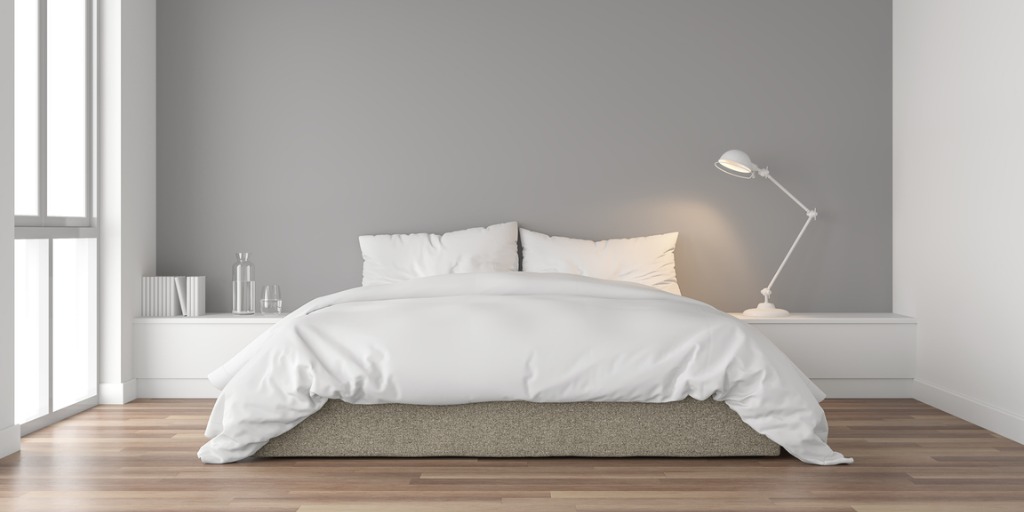
Bedroom
While Google Assistant can’t bring you breakfast in bed, it can make you feel like you never need to leave your warm cocoon again. Here are some ways that you can turn your bedroom into a command center.
A. Rise and shine, sleepyhead.
Google can help you start the day by waking you up with a simple alarm. It’s up to you whether you set the alarm every night or create a recurring alarm by using commands like “weekdays” or “every day.”
B. Find your comfort zone.
During a chilly winter morning or a scorching evening in the summertime, you can ask Google to adjust the temperature with a smart thermostat.
C. Get the lights.
Ease yourself out of bed by having Google turn on the smart lights when your alarm goes off. Or you can invite sleep at night by dimming the lights before you hop in bed and turning them off once you wrap yourself in your favorite blanket.
D. Stay in the loop.
Ask Google to share the weather and top news stories to see if climbing out of bed is worth the effort. Depending on the news, you might decide to get another 10 minutes of shuteye for good luck.
Set sleep timers
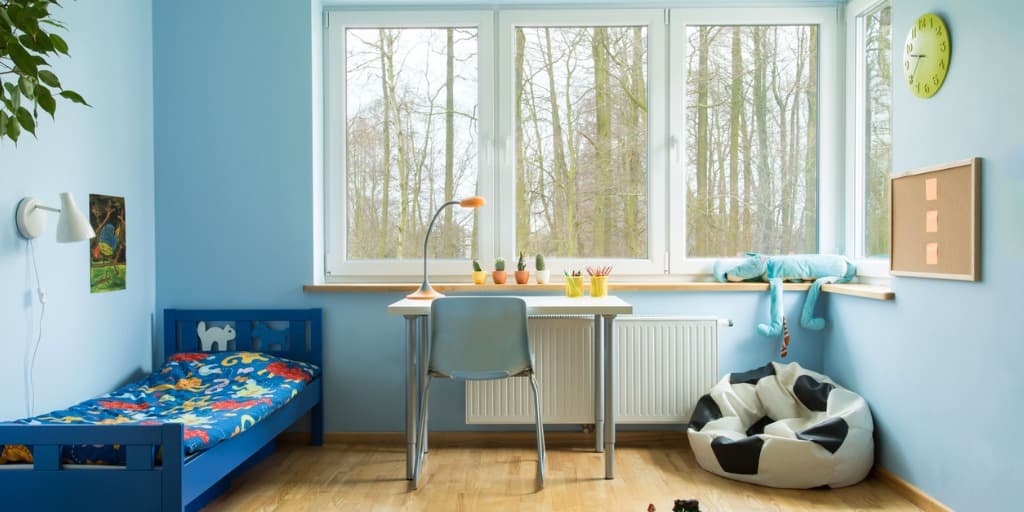
Kid’s bedroom
The biggest similarity between Google Assistant and imaginary friends is that both like to answer all of the questions kids have, except you can actually hear Google’s reply. Here are some ways Google Assistant can be a playmate and friend for your child.
Use Family Bell to help at-home students manage time
A. Tell jokes.
Kids are probably the reason jokes exist because they’ll laugh at anything remotely funny. It doesn’t matter if it’s a good joke or a bad Dad joke, Google’s got the goods to crack some smiles.
B. Play a game.
Google Assistant knows all the rules and has infinite patience to play hundreds of games with kids. Kids can pass the time with classics like Jeopardy! and Connect Four.
C. Turn playtime into storytime.
Give your kids a break from the TV by asking Google to tell them a story. They could also try out an interactive story by saying, “Hey Google, play Strangest Day Ever.”
D. Have a dance party.
It’s hard to keep up with kids sometimes—how do they fit so much energy in their little bodies? Host a dance party with YouTube Music or Spotify to help them use this extra energy.
E. Set a timer for everything.
Timers can help your kids do basic tasks like brushing their teeth and washing their hands. They can also motivate kids to devote a few minutes to homework before they plop down in front of the TV.
Google’s timers aren’t universal
F. Stand watch.
Google Assistant works with some nanny cams and baby monitors and can help you look after a napping baby.
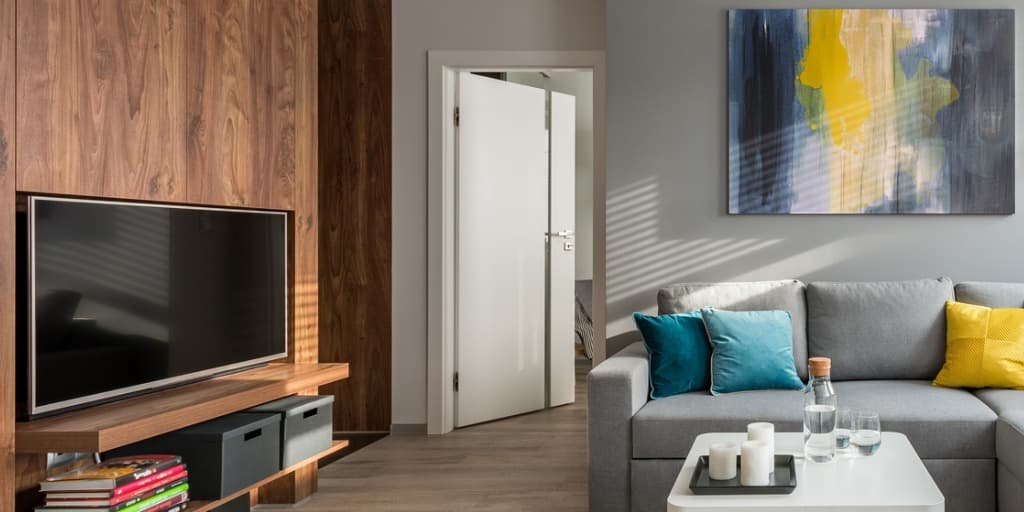
Living Room
As the social center of your hub, the living room is an ideal place for one or more smart speakers. Here are a few ideas to help take your living room to the next level.
A. Stay informed.
Keep up with the latest news by asking Google for news from your favorite source. If you want something more than headlines, you could try a new podcast about sports, pop culture, or philosophy.
B. Create some atmosphere.
Whether you’re up for a house party or a quiet night alone, Google Assistant can help you set the right mood. Start by asking Google to dim the lights, turn down the thermostat, and turn up the music.
Assistant can do many things at once
C. Watch TV.
If you have Chromecast devices, you can ask Google to play videos from many streaming platforms like Netflix, HBO Now, Hulu, CBS, and Sling TV. You can also ask to skip episodes, fast-forward, or rewind a few seconds to catch a critical scene that you missed.
D. Find your phone or your keys.
Google Assistant can help find any smartphone linked to your Google account. You could also get a remote tracker like a Tile Pro to attach to your keys.
E. Remember where your stuff is.
We’ve all gone through this—you buy some camping equipment or a secret present for a friend and store it away only to forget where it is when you need it. Google Assistant can help you remember where it is.
Just ask, “Hey Google, remember that Karen’s gift is in the hallway closet upstairs.” If you need help jogging your memory later on, you can ask Google where it is.
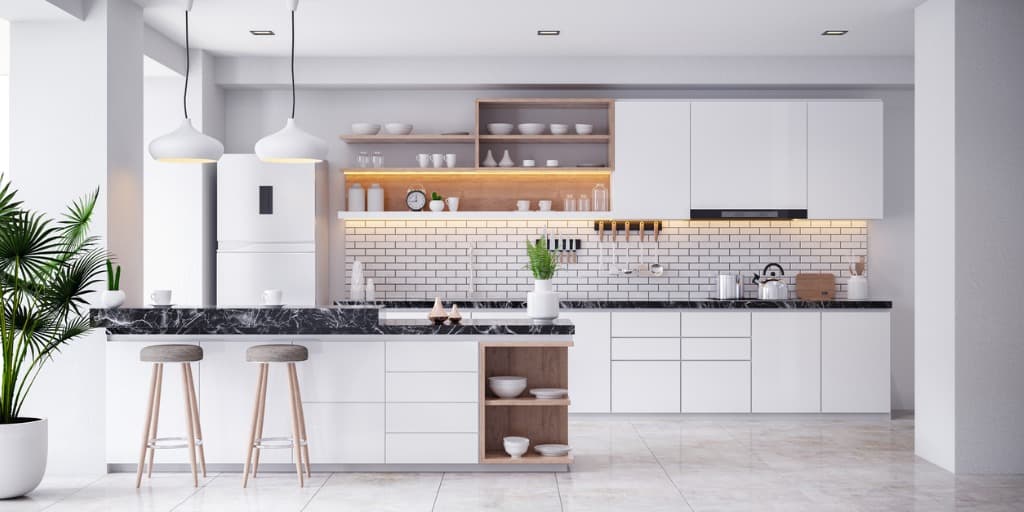
Kitchen
Using Google Home in the kitchen is like having an assistant chef (you still do all the cooking, for now). You can get help with your favorite recipes, make shopping lists, or keep your kitchen squeaky clean by ordering out.
A. Start the day with a cup of coffee.
A Wi-Fi coffee maker like the Atomi Smart Coffee Maker might not turn your home into a bonafide cafe with cake pops and free Wi-Fi, but it’s a quick way for Google to help you get your caffeine fix before you tackle your day. Or you could skip the coffee maker and order Starbucks from your Google Nest Mini.
B. Make a grocery list.
Nix the pen and paper—make your shopping list through Google Assistant. When you run out of eggs, avocados, or fancy mustard, just ask Google to add some to the list. You can find the list on your phone while you’re at the store.
C. Order out.
When the fridge is empty and you don’t feel like week-old leftovers, treat yourself by asking Google to order food. Google Assistant works with a variety of services like DoorDash and Postmates.
D. Find the perfect recipe for your ingredients.
If you can’t figure out what to make with potatoes that doesn’t involve frying or mashing, ask Google for potato recipes or anything else you have on hand. If you have a Google Nest Hub in the kitchen, you can see or listen to the ingredient list and steps with a quick voice command.
E. Eat smarter.
Tasty food doesn’t always have the nutrients you need in a balanced diet. If you’re keeping an eye on your health, you can ask Google Assistant to tell how much fiber is in a cup of oats or what vitamins are in an apple. You can also get info about how many calories are in your favorite dessert.
Leave the floors to Google with a robot mop
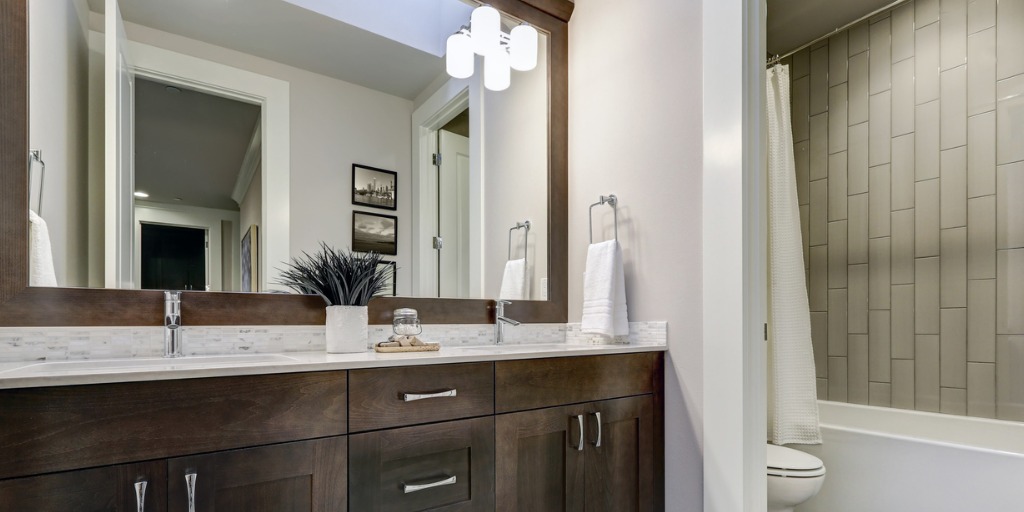
Bathroom
Bathrooms don’t seem like a prominent place to put a smart speaker. But there are some surprising ways Google Assistant can streamline these havens of privacy and personal grooming.
A. Turn off the curling iron.
It’s easy to tell if you left the hairdryer on, but a bit harder with other styling tools—especially if you’re halfway out the door. By pairing a smart outlet with Google Assistant, you can cut the power and prevent a fire.
B. Stock up on toilet paper (and other supplies).
When supplies run low, you can order more with Google Shopping. Now you can focus on your hygiene without shaking out every last drop of shampoo or finding an empty roll of toilet paper after it’s too late.
C. Get help washing your hands.
Instead of setting a timer, you can ask Google to help you wash your hands. You’ll hear a song for 40 seconds while you scrub away every last germ.
D. Mind your medications.
While Google Assistant can remind you about anything, medication is probably a high priority for most folks. Following the doctor’s instructions to the letter just got a whole lot easier.
“Hey Google, remind me to check the mail when I get home.”

Front Yard
Although Google speakers aren’t weatherproof, Google Assistant is compatible with a lot of smart devices outside your home. It can help boost your security or give you a bit more light for nighttime parties and projects. Here are some of our favorite things for the front yard.
A. Answer the front door.
Install a video doorbell or an outdoor security camera to see what’s happening at your front door on your Google Nest Hub. The Nest Hello is one of the better options for Google smart homes because of its package detection and quick replies to tell visitors you’re coming to the door.
B. Lock your doors.
Does your heart drop after you pull out of the driveway because there’s a small possibility you left the door unlocked? It happens to everyone. You can get a smart lock or smart garage door opener to keep your castle safe, even if you occasionally need to ask Google to pull up the drawbridge.
C. Turn night into day.
Keep some smartbulbs on your porch to make it easier to work or chill outside after the sun goes down. For an extra touch of security to startle unwelcome guests, consider a motion-activated light like the Arlo Security Light.
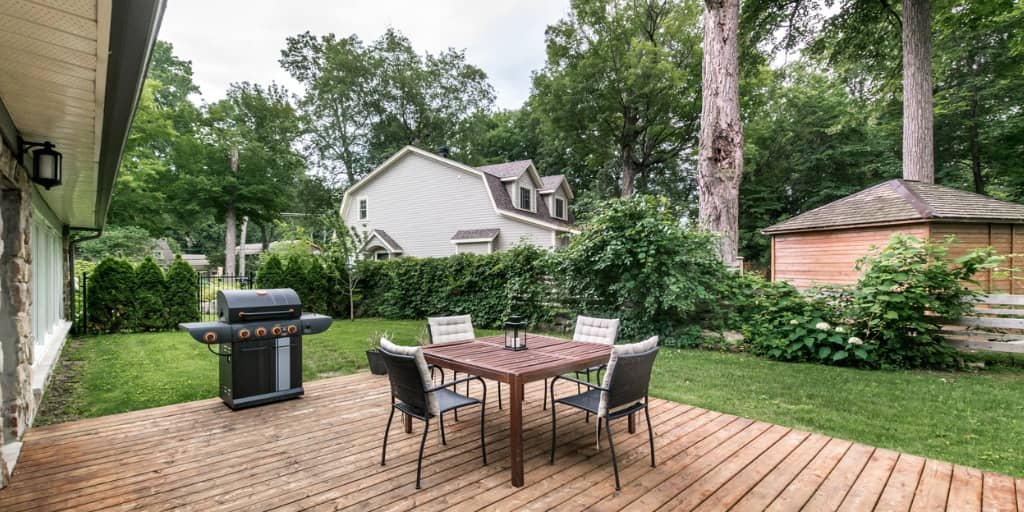
Backyard
The backyard is your personal playground (some even have a playground). It’s where you have fun, but it’s also a lot of work to keep up. Here are some ways Google Assistant can help you spend less time on chores while enjoying your backyard even more.
A. Get smart about watering.
Saving water isn’t just good for the environment; it’s an excellent way to cut your expenses. With a Wi-Fi sprinkler system, you can easily set watering schedules. When the forecast calls for rain, you can ask Google Assistant to hold off on watering to save on your water bill.
B. Make a robot mow your lawn.
Robot lawnmowers are expensive, but we won’t judge if you want to steer clear of the hot summer sun while keeping your yard neat and tidy.
C. Become a grill master.
Whether you cook your steak with a timer or a smart meat thermometer, Google Assistant can give you grilling tips to help master the BBQ. You could also find recipes for the best rubs and marinades.
Google Assistant FAQ
How much does Google Assistant cost?
You don’t pay anything to use Google Assistant. But you might pay for related things like a Nest Aware video plan for security cameras or a Spotify subscription.
Nest Aware Subscription for smart speakers
Do I have to say OK Google every time?
Officially, yes. But Google Assistant sometimes responds to phrases with similar vowel sounds. Here are two of our favorites:
- Hey Boo Boo
- Hey Goober
Can Google Assistant answer my phone?
While Google Assistant can make outgoing phone calls in most of the US and Canada, it can’t receive incoming calls. You can also make video calls using Google Duo on a smartphone or Google Nest Hub Max.
Make a reservation with Google Assistant
Do you need a smartphone to use Google Assistant?
Yes, you need a smartphone or tablet with the Google Home app to connect your Google smart speakers and smart displays to a Wi-Fi network. You can also install Google Assistant on your Android or iOS smartphone if you don’t have a device with built-in Google Assistant voice control.
How do I get new Google Assistant voices?
One advantage that Google Assistant has over Alexa and Siri is the ability to customize the voice. Here’s an article from Google to help you choose the voice of your Google Assistant.
Is Google Assistant better than Alexa?
There aren’t many differences between Google Assistant and Alexa, but Google stands out in a few ways:
- Google Assistant consistently has more accurate answers and search results. Google is the king of search engines, so it’s not hard to imagine why Assistant excels here.
- It can do realtime translation between different languages. This is a fantastic feature for getting to know someone that speaks another language.
- We mentioned these above, but Google Assistant can also understand up to three simultaneous commands and has different voices.
Google Assistant still needs to catch up with Amazon’s Alexa in a couple of ways: Alexa stands out because of the sheer number of skills it has and its outstanding compatibility with smart homes.
See how these smart assistants compare in our in-depth Google Home vs. Alexa article.
Is Google Assistant always listening?
Yes, Google Assistant never stops listening for the wake word. Just as Google saves all of your Chrome or search data in its database for more personalized results, it also keeps track of every request you make with Google Assistant.
You can delete Google Assistant activity by voice or by visiting the Assistant activity page for your Google account. You can turn off the microphone on Google Assistant smart speakers and smart displays using a button on the back of the device.
To learn more, check out Google’s resource article about how to choose what to share with your Google Assistant.
Related articles
- Outfitting Your Smart Home: Google Assistant Devices
- Best Smart Home Automation Systems
- Home Automation Guide for Beginners
- Room-by-Room Guide to Home Automation
- Ultimate Guide to Alexa and the Amazon Echo Family
- How to Connect Your Nest Products to Google Home
Disclaimers
†Google, Google Nest, Google Nest Mini, Google Home and other marks are trademarks of Google LLC.
Certain content that appears on this site comes from Amazon. This content is provided “as is” and is subject to change or removal at any time. Safewise.com utilizes paid Amazon links.
The post Ultimate Guide to Google Assistant and Google Nest Products appeared first on SafeWise.
Article source here: Ultimate Guide to Google Assistant and Google Nest Products
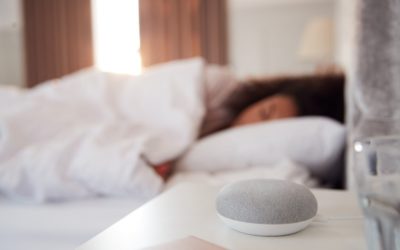
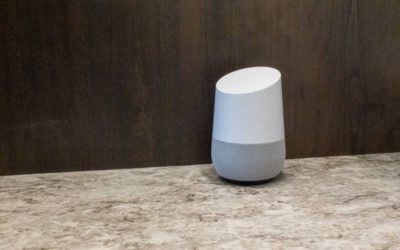
No comments:
Post a Comment